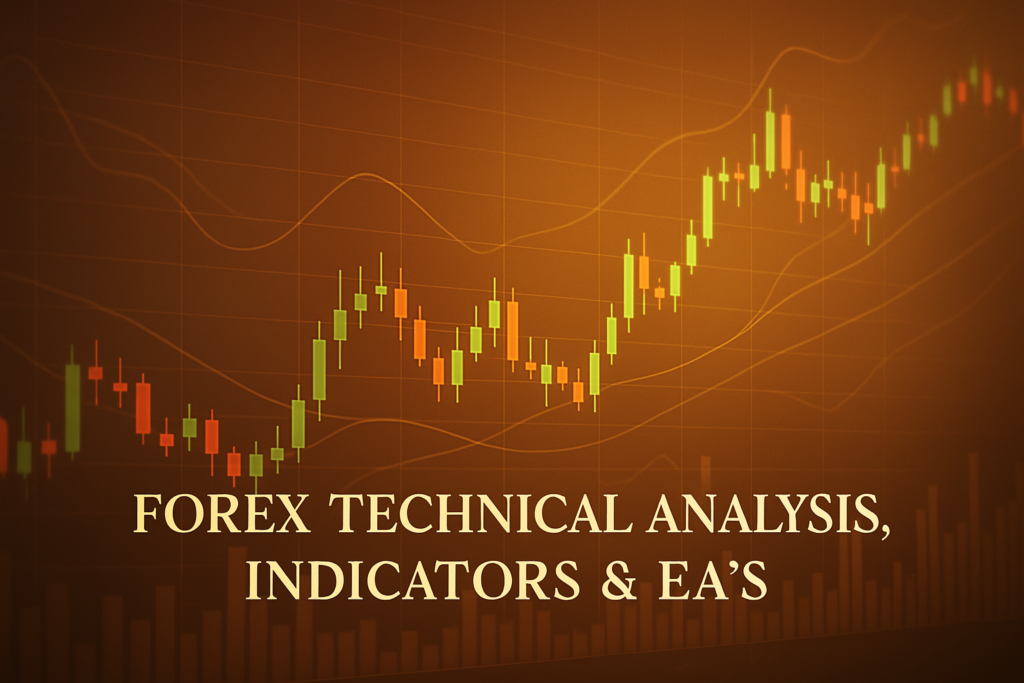
The rainbow moving average is a unique tool that helps Forex traders identify trends and improve their strategies for better trading outcomes.
The rainbow moving average is a colorful and dynamic tool that helps traders navigate the ups and downs of the Forex market. Imagine a beautiful rainbow that shows you the direction of the market trends. This technique uses multiple moving averages to create a visual representation of price action, making it easier for traders to spot potential buy or sell opportunities.
However, many traders, both beginners and professionals, struggle to grasp its full potential. They often find it challenging to interpret the various colors and lines, which can lead to confusion and missed opportunities. Understanding how to use the rainbow moving average effectively can significantly benefit your trading journey, allowing you to enhance your strategies and make more informed decisions.
In this article, we will explore what the rainbow moving average is, its history, advantages, disadvantages, and how to apply it in your trading. We will also discuss several trading strategies that incorporate this powerful tool.
Sometimes, traders may face issues like “Can’t move or hide some buttons” in their trading platforms. For guidance on resolving such problems, refer to this helpful article on Can’t move or hide some buttons.
What is a rainbow moving average?
The rainbow moving average is a trading indicator that combines multiple moving averages of different periods. Think of it as a set of colorful lines on your chart that shows the overall trend of a currency pair. Each color represents a specific time frame, helping you see if the market is moving up, down, or sideways.
Types of rainbow moving average
There are several types of rainbow moving averages, including:
- Simple Moving Average (SMA): A basic average of prices over a specified period.
- Exponential Moving Average (EMA): Gives more weight to recent prices, making it more responsive.
- Weighted Moving Average (WMA): Similar to EMA but places different weights on different prices.
How rainbow moving average smooths out price action
The rainbow moving average helps smooth out the chaotic price movements in Forex trading. By using multiple averages, it filters out the noise, allowing traders to see the true direction of the market. This smoothness makes it easier to identify trends and potential reversals.
Common periods used and why
Traders often use various periods for their rainbow moving averages, such as 5, 10, 20, and 50. Shorter periods provide quick signals but may lead to false alarms. Longer periods offer more reliable signals but react slower to price changes. It’s essential to find the right balance based on your trading style.
The History of rainbow moving average: How It Became Popular
Origin of rainbow moving average
The rainbow moving average was pioneered by traders seeking a better way to visualize market trends. By combining multiple moving averages into a single display, they created a tool that simplified decision-making. This innovation gained traction in the early days of Forex trading, as more traders recognized its potential.
When did traders start using it widely?
As technology advanced and trading platforms became more sophisticated, the rainbow moving average began to gain popularity in the 2000s. Traders embraced its ability to provide clear signals about market direction, leading to its widespread use in various trading strategies.
Real-life stories
Many professional traders have shared success stories of how the rainbow moving average transformed their trading. For example, a trader once turned a small investment into a substantial profit by relying on this tool to identify trends and make timely trades. Such stories inspire many aspiring traders to explore the rainbow moving average.
Advantages and Disadvantages of rainbow moving average
Advantages:
- Helps identify trends easily: The rainbow moving average provides a clear visual representation of market trends, making it easier to spot opportunities.
- Useful for dynamic support and resistance: The multiple lines can serve as support and resistance levels, helping traders make better decisions.
- Works well for crossover strategies: When different colored lines cross, it can signal potential buy or sell opportunities.
Disadvantages:
- lags behind price movements: Since moving averages are based on past prices, they may not react quickly enough to sudden market changes.
- Can give false signals in sideways markets: In a ranging market, the rainbow moving average may provide misleading signals, leading to potential losses.
How to Apply rainbow moving average on MT4 & MT5
Step-by-step guide to adding rainbow moving average on charts
To add the rainbow moving average to your MT4 or MT5 charts, follow these simple steps:
- Open your trading platform.
- Select the currency pair you want to analyze.
- Click on “Insert” in the top menu.
- Choose “Indicators” and then select “Moving Average.”
- Set the parameters for your rainbow moving average.
Customizing rainbow moving average settings
You can customize your rainbow moving average by adjusting the periods, colors, and types of moving averages. This allows you to create a visual representation that suits your trading style and preferences. For instance, you might choose brighter colors for faster-moving averages and darker colors for slower ones.
Saving templates for easy application
Once you have customized your rainbow moving average, save it as a template. This way, you can quickly apply the same settings to other charts in the future without starting from scratch.
5 to 7 Trading Strategies Using Only rainbow moving average
All Time Frame Strategy (M5 to D1)
This strategy works across all time frames. Traders look for the alignment of multiple colors in the rainbow moving average. If the shorter periods align above the longer periods, it indicates a bullish trend, and vice versa for a bearish trend.
Trending Strategies
During strong trends, traders can use the rainbow moving average to enter positions in the direction of the trend. For example, if the price is above the rainbow moving average, traders can look for buy opportunities, and if it’s below, look for sell opportunities.
Counter Trade Strategies
In this strategy, traders look for divergence between the price and the rainbow moving average. If the price is making new highs while the rainbow moving average is not, it may signal a potential reversal.
Swing Trades Strategies
Swing traders can use the rainbow moving average to identify entry and exit points. For instance, they might enter a trade when the price pulls back to the rainbow moving average and shows signs of bouncing back.
5 to 7 Trading Strategies Combining rainbow moving average with Other Indicators
All Time Frame Strategy (M5 to D1)
This strategy combines the rainbow moving average with the Relative Strength Index (RSI). Traders look for buy signals when the RSI is below 30 and the price is above the rainbow moving average.
Trending Strategies
By combining the rainbow moving average with Bollinger Bands, traders can identify entry points during trending markets. If the price touches the lower band while above the rainbow moving average, it may signal a buying opportunity.
Counter Trade Strategies
This strategy uses the rainbow moving average along with MACD. When the MACD line crosses below the signal line while the price is above the rainbow moving average, it may indicate a potential sell signal.
Swing Trades Strategies
Combining the rainbow moving average with Fibonacci retracement levels, traders can identify potential reversal points. If the price retraces to a Fibonacci level and aligns with the rainbow moving average, it may signal a good entry point.
Sometimes traders encounter challenges like “No Transparency Option for Objects.” For assistance in overcoming this issue, check out this article on No Transparency Option for Objects.
Top 10 FAQs About rainbow moving average
1. What is a rainbow moving average?
A rainbow moving average is a visual tool that combines multiple moving averages to show trends in the Forex market.
2. How do I set up a rainbow moving average?
You can set it up in MT4 or MT5 by selecting multiple moving averages and customizing their periods and colors.
3. What time frames work best with the rainbow moving average?
The rainbow moving average works well on all time frames, but it’s essential to consider your trading strategy.
4. Can I use the rainbow moving average for day trading?
Yes, many day traders use the rainbow moving average to identify quick trading opportunities.
5. What are the main advantages of using a rainbow moving average?
It helps identify trends easily, serves as dynamic support and resistance, and works well for crossover strategies.
6. Are there any disadvantages?
The rainbow moving average can lag behind price movements and may give false signals in sideways markets.
7. How can I combine it with other indicators?
You can use the rainbow moving average alongside indicators like RSI, MACD, or Bollinger Bands to enhance your trading strategies.
8. What is the best period for the rainbow moving average?
It depends on your trading style; shorter periods provide quicker signals, while longer periods offer more reliable trends.
9. Is the rainbow moving average suitable for beginners?
Yes, it can be a helpful tool for beginners to understand market trends visually.
10. How can I improve my trading using the rainbow moving average?
Practice applying it in different market conditions and combine it with other indicators to see what works best for you.
Conclusion
In summary, the rainbow moving average is a powerful tool in Forex trading. It simplifies trend identification and provides valuable insights into market movements. By understanding its advantages and disadvantages, you can leverage this tool effectively in your trading strategies.
Before investing real money, it’s essential to test your strategies using a demo account. This practice will help you gain confidence and experience, ensuring you make informed decisions in the live market.
Get a broader view of this strategy with help from top sources Zacks, Seeking Alpha
Expand Your Knowledge
- 📌 Forex Trading Learning Road Map
- 📌 Forex Trading Course with no Fees
- 📌 Forex Trading Issues, Problems, and Solutions
- 📌 Forex Daily Forecast & Live Updates
- 📌 Forex Fundamental & News Analysis: Tomorrow’s Market Movers & Trade Opportunities
- 📌 Forex Education Hub: Learn & Profit
- 📌 Forex Technical Analysis, Indicators & EA’s
Start Trading Today
Ready to take your forex trading to the next level? Open an account with Exness, one of the most trusted platforms in the industry. 👉 Sign Up Now and trade with confidence!
My recommended broker stands out with ultra-low spreads for beginners, instant withdrawals, and zero spread accounts for pro traders.
Trusted since 2008, lightning-fast execution, no hidden fees, and a secure, transparent trading environment—giving you the edge you need to succeed. 🚀
YouTube Video Library: Related Videos
Note: The video above is embedded from YouTube and is the property of its original creator. We do not own or take responsibility for the content or opinions expressed in the video.



